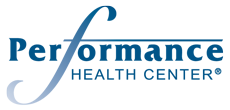Last month I wrote this Blog “Fight or Flight” vs. Rest and Relax”: https://www.performancehealthcenter.com/rest-relax-vs-fight-flight/
“Rest and Relax” Parasympathetic Nervous System (PNS) vs “Fight or Flight” Sympathetic Nervous System (SNS)…. I am writing this Blog as a follow up. If you read last month’s blog you may be wondering which system in your body is overpowering the other.
Short review: We all have both a Parasympathetic Nervous System (PNS) and Sympathetic Nervous System (SNS), both of which are regulated by our Central Nervous System (CNS). Whichever one is dominant in you may influence your overall health. People who are more SNS dominant may have trouble relaxing, they may have hypertension, muscle tension, irritability, and difficulty with digestion and/or elimination. There are a host of health-related problems from being too SNS dominant.
This blog will focus on helping you to reduce unwanted muscle tension. I see it every day at our office… patients come in with extremely tight muscles throughout their bodies, especially in their upper back and neck areas. These areas are known to be target areas for excess stress brought on by an overpowering sympathetic nervous system (SNS). The human design is excellent at times – you are at the start line of a race and your SNS is in high gear, allowing you to race at your best, your heart rate is up, your blood pressure increases and your muscles are ready for action- and when you use all this in an active way it all makes sense. This same design is terrible when it comes to sitting at your desk working on an overdue project, or you are driving and were just cut off for the 3rd time this morning on your way to work! Now, that same elevated heart rate and blood pressure and increased muscle tension has no place to go and you end up with intense muscle tightness and irritability. When this happens on a regular basis over a long period of time you can start to get chronic muscle tightness and, in some cases, even chronic muscle spasms.
The sympathetic and parasympathetic nervous systems have a complementary, push-pull relationship. Together, these systems act a bit like an accelerator and a brake for our bodies and also help to maintain balance, or “homeostasis.”
During the fight or flight response (SNS), your body slows or shuts down many of the rest and repair processes so that more energy is available for the processes necessary for immediate action. In nonemergency situations, the parasympathetic nervous system (PNS) is supposed to go to work, conserving energy and directing it to rest and repair responses, including healing, unless your PNS is being overpowered by your SNS. This is where chiropractic care can be very helpful.
While stress hormones and the physiological changes they trigger can be helpful (maybe even life-saving) when we’re facing real physical threats, they can do significant damage to our health over the long term if they’re switched on all the time. Regular Chiropractic adjustments can help balance out an overactive SNS and an under active PNS. Chiropractic adjustments have been shown to affect the autonomic nervous system by helping to down-regulate the sympathetic nervous system and stimulate parasympathetic activity. Quieting the fight or flight responses in turn promotes healing, bolsters the immune system and helps relieve the immediate sensation of pain.
Is your SNS turned on all the time? Balance out your nervous system and keep it healthy with regular Chiropractic care.
If you have any questions about this blog or your health in general please feel free to contact me at: [email protected]
